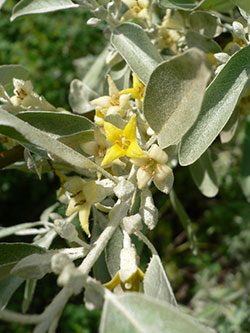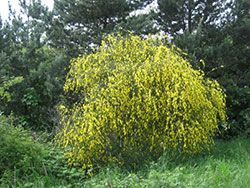When you think of “invasive weeds”, what comes to mind? Thistles, knapweeds, leafy spurge, and other herbaceous plants and grasses? There are so many herbaceous noxious weeds that often the woody species are overlooked. However, Colorado has a couple of woody invasive species that are well-established and problematic in  the state.
the state.
What are the most common noxious weeds?
The two established state-listed noxious weed species are Russian Olive (Eleagnus angustifolia) and Tamarisk or Salt-cedar (Tamarix ramosissima). Both were beloved as ornamental windbreaks but are now known to be trouble along waterways. They easily out-compete native vegetation and alter theway nutrients cycle in riparian areas. They also harm hydrological cycles and change which birds, reptiles and amphibians can live nearby. There are large, ongoing efforts to control these noxious plant species because of their detrimental effects.
What invasive woody plants exist in Colorado?

There are other invasive woody plants that could pose future problems in Colorado. On “list A” of the state noxious weed list is Camelthorn (Alhagi pseudalhagi), a spiny shrub in the pea family. Other woody species that are potential invaders include the multiflora rose (Rosa multiflora), a couple of buckthorns (Rhamnus cathartica and R. frangula), Autumn olive (Eleagnus umbellata), and Scotch broom (Cytisus scoparius). Avoid planting these species, and let your local weed manager know if you spot any of them.



